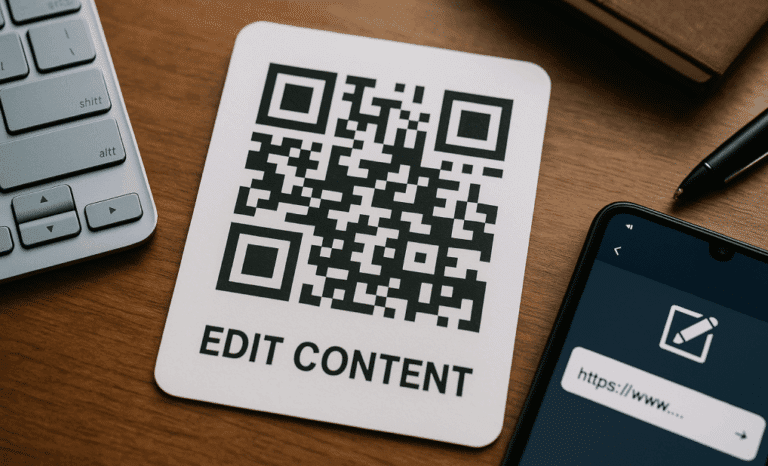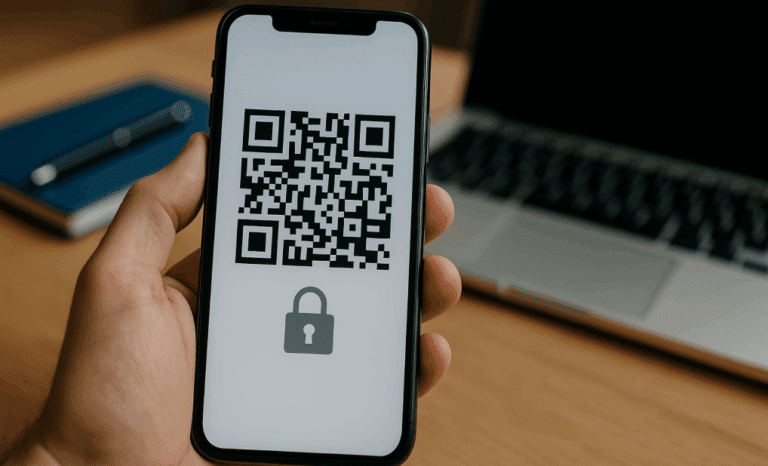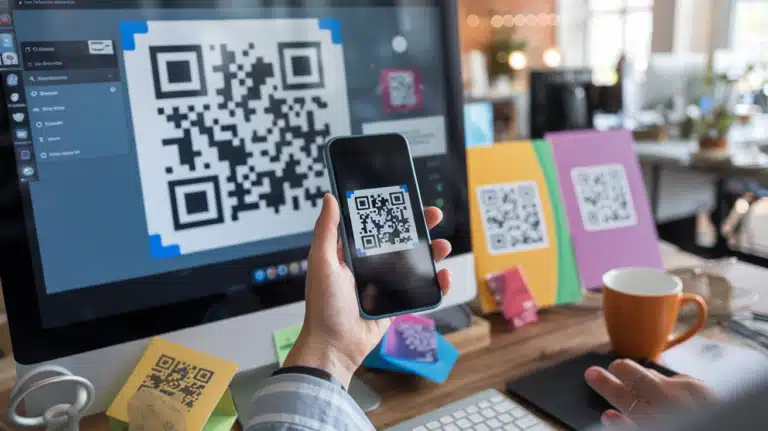QR codes have evolved far beyond their original function. From fixed URLs to real-time, editable destinations, today’s dynamic QR codes have become smart tools for marketing, communication, and customer engagement. But how do you make the most of them? And how exactly can you edit QR content dynamically without reprinting or replacing the code?
Let’s walk through everything you need to know about editable QR codes—what they are, how they work, and how you can use QRCodeKIT to update your content anytime.
What does it mean to edit QR content dynamically?
To “edit QR content dynamically” means you can change the destination or content behind your QR code after it has already been generated and distributed—without altering the physical code itself. This is possible only with dynamic QR codes, not static ones.
While a static QR embeds the final URL or data directly into the code (making it permanent), a dynamic QR code stores a short redirect URL, which can point to a new destination at any time. This flexibility is the key advantage of dynamic QR technology.
Dynamic QR codes vs static: What’s the difference?
Understanding the difference between static and dynamic QR codes is essential when planning your QR strategy.
Static QR codes:
- Fixed content (can’t be changed after creation)
- No analytics or tracking
- Ideal for simple, one-time uses like plain text or Wi-Fi logins
Dynamic QR codes:
- Editable content
- Analytics (like scan time, location, and device type)
- Ideal for marketing, product packaging, digital business cards, and more
If you want to update a website URL, redirect to a different landing page, or track scans over time, dynamic is the way to go.
Why editing QR content is a game-changer for marketers
When you edit QR content dynamically, you’re not just making updates—you’re future-proofing your campaigns. Whether you’re managing seasonal promotions, updating product packaging, or optimizing CTAs based on performance, editable QR codes give you the agility to keep up.
Some use cases:
- Switch from a promotional video to a product catalog
- Update your digital business card when you change jobs
- Redirect a campaign link to a localized landing page based on performance insights
- A/B test CTAs in real-time without printing new materials
This level of flexibility makes QR codes much more than scannable links—they become fully functional marketing tools.
How QRCodeKIT makes it easy to edit dynamic QR codes
QRCodeKIT was designed from the start to support smart, flexible, and fully editable QR codes. Here’s how the platform helps:
- Simple dashboard: View, edit, and organize your existing QR codes at any time.
- Dynamic redirect engine: Change your destination URL in seconds—no regeneration needed.
- Visual QR design: Customize brand colors, logos, and visual elements without affecting code functionality.
- Management tools: Tag and categorize your codes for easy updates and tracking.
- Google Analytics integration: Track user engagement, including scan location, device type, and more.
Whether you’re handling one campaign or thousands of active codes, QRCodeKIT gives you the control you need.
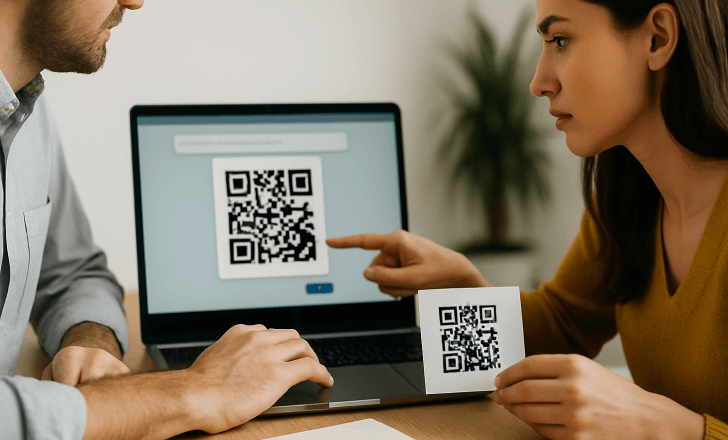
A closer look at editable destinations
When you create QR codes using QRCodeKIT’s dynamic QR code generator, you can link to:
- A landing page
- Social media profiles
- App store links
- Digital business cards
- Product documentation
- Downloadable files
- Contact forms
- Or any custom destination URL
And if any of these need to change later—say, the file is updated or the campaign ends—you just log in, edit the QR, and save. All printed codes remain valid.

How to edit an existing QR code: Step-by-step
Already have a QR code created with QRCodeKIT and want to update it? Here’s a quick walkthrough:
- Log into your account on QRCodeKIT.
- Navigate to your Dashboard and select the QR code you want to update.
- Click Edit.
- Change the destination content (URL, video, file, page, etc.).
- Optionally update metadata, tags, or access settings.
- Click Save. Your QR code is now updated in real time.
There’s no need to download or print a new code unless you want to change its visual design.

Can you edit QR codes created elsewhere?
If you generated a static QR code using another QR code generator, you’re likely out of luck. Static QR codes don’t support redirects or dynamic content. But you can recreate the code on QRCodeKIT using a QR code template and make it dynamic going forward.
Simply copy the original destination URL, generate a new dynamic QR code, and start managing it with full flexibility. It’s a great way to bring older campaigns into a more agile, data-driven future.
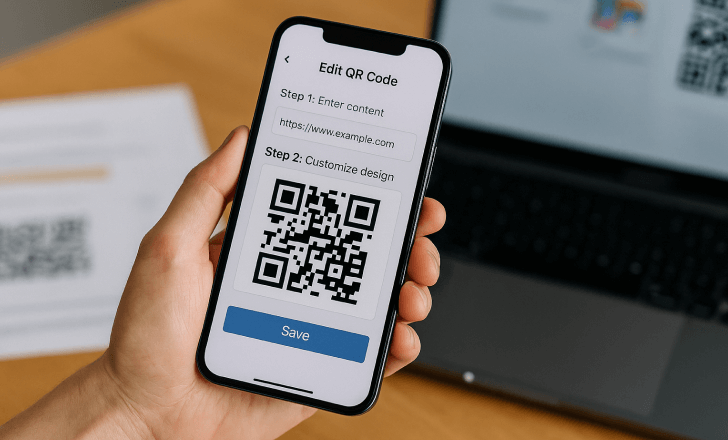
When is it worth upgrading to a paid plan?
QRCodeKIT offers a free plan that lets you create up to two dynamic QR codes and track basic scan stats. But if you’re managing multiple campaigns or marketing materials, it may be time to upgrade.
Paid plans unlock:
- More editable QR codes
- Advanced analytics (like device type and location)
- Bulk QR generation
- Custom domains
- API access for large-scale QR code integration
- Visual and branding tools for better QR design
Editing QR content dynamically becomes even more powerful when combined with these pro-level features.
QR code design and branding: What stays the same?
It’s worth noting: when you edit the destination of a dynamic QR code, the QR image itself doesn’t change. That means your QR code design—color, shape, embedded logo—remains intact, even as the content evolves.
This is especially helpful if your QR is already printed on product packaging, posters, or business cards. People scan the same code but reach new content, tailored to your evolving goals.
You can also use QR templates to speed up your workflow, especially if you’re running multiple campaigns with similar structures (e.g., event flyers, retail promotions, educational materials).
Use editable QR codes to build smarter marketing funnels
A dynamic QR code isn’t just a shortcut—it can be the first step in a multi-stage funnel. By editing your QR content dynamically, you can experiment, adapt, and learn from your audience in real time.
Examples:
- Link to different landing pages based on the campaign stage
- Redirect based on device type to optimize mobile experience
- Test various calls to action and refine based on scan performance
- Route users to localized content based on language or region
Over time, you’ll get more scans, better engagement, and stronger insights into what your audience responds to.
How editable QR codes support long-term strategies
QR codes are no longer a one-time-use technology. With platforms like QRCodeKIT, they become living, evolving assets. Editable QR codes make it easier to:
- Reuse the same physical assets across different campaigns
- Update product documentation without changing packaging
- Stay GDPR-compliant with dynamic consent and privacy notices
- Adapt to business changes, such as new offers or site structures
This is why more marketers, educators, and product managers are switching to editable dynamic QR codes as the standard.
What to keep in mind before editing your QR content
While dynamic QR codes offer great flexibility, a few things are worth remembering:
- Edits should be tested: Make sure the new URL or file loads properly across different devices.
- Some platforms cache QR content: If you’ve shared your QR on social media, the preview might not update immediately after changes.
- Tracking resets: If you’re switching from one content type to another, consider how that affects your analytics and campaign continuity.
- QR visuals stay the same: If you need a visual update, you’ll have to regenerate the code with a new design.
Planning ahead and using proper management tools (like folders, tags, and templates) can make your editing workflow seamless.
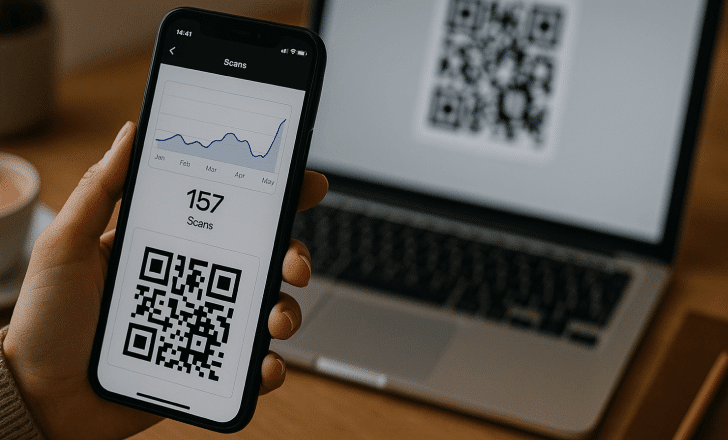
Final thoughts: Make your QR codes work harder
The ability to edit QR content dynamically is what separates a basic code from a truly smart one. Whether you’re updating a link, re-routing a campaign, or optimizing for new audiences, editable QR codes give you full control—without any physical do-overs.
QRCodeKIT was one of the first platforms to introduce dynamic QR codes in 2009, and it continues to offer the flexibility, customization, and analytics today’s users need. Whether you’re just getting started or managing thousands of codes, it’s your go-to dynamic QR code generator for modern marketing.
So next time you scan a QR code, ask yourself: can it change with your strategy? If the answer is yes, you’re already ahead.
